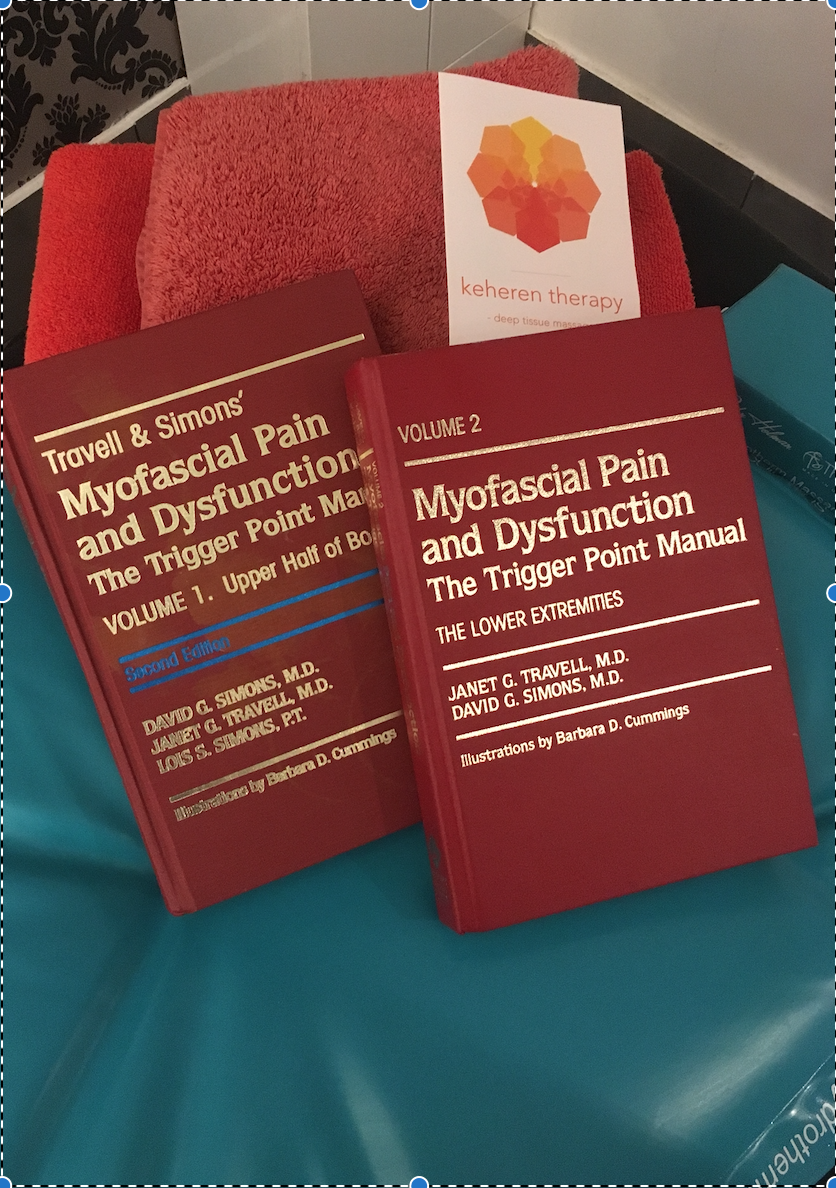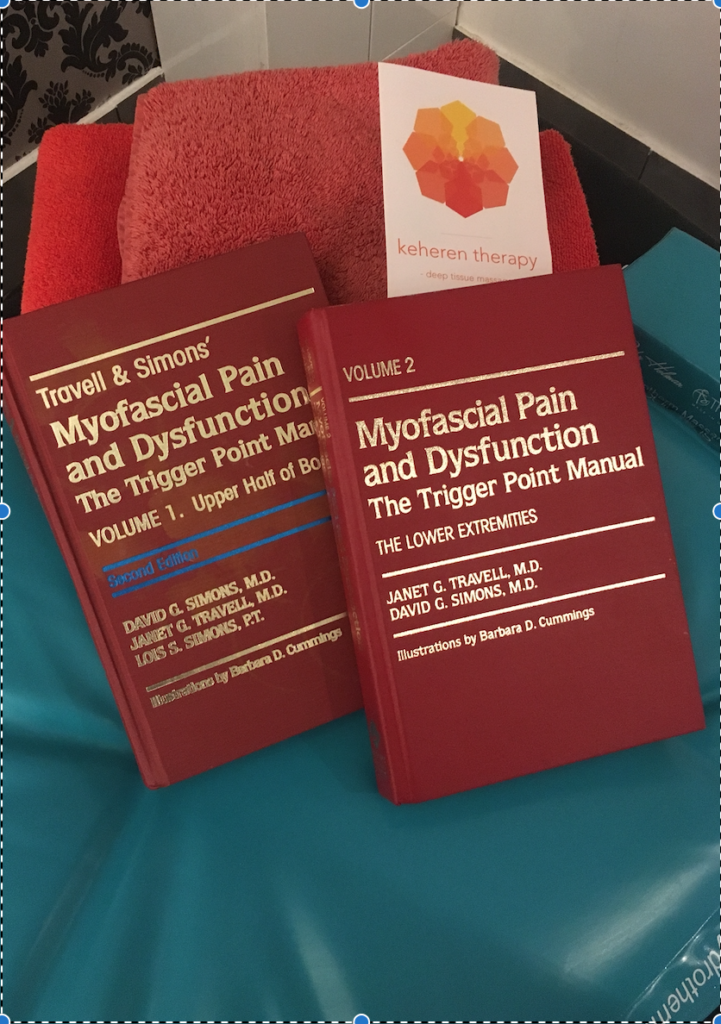What is myofascial release good for?

Cate, one of our Truro massage therapists, has specialised in Trigger point and myofascial release therapy since 2015.
Here she explains what is myofascial release good for, the science behind trigger points and how she incorporates it into her practice.
The science behind trigger points.
Dr Janet Travell first documented trigger points; she was a pioneer for the treatment of Myofascial release pain. Treating amongst others J F Kennedy she used dry needling in her treatments. Her manuals are popular in the profession for reference when studying myofascial pain and dysfunction and trigger points.

A trigger point is defined as
‘a hyperirritable spot in skeletal muscle that is associated with a hypersensitive palpable nodule in a taut band’ (Simons et al. 1999).
Physicians, physical therapists, chiropractors, bodyworkers, and other clinicians should work to decrease trigger point pain and reverse the observed hypoxia and low pH by releasing trigger points and normalizing tissue extensibility.
A study by Kharmwan Et. al. in 2005 found a great reduction in back pain with myofascial trigger point, in conjunction with massage therapy.
Fascia operates as a sling system of collagenous connective tissue. It wraps, contains and holds in place our organs, muscles and skeletal system. Facial planes connect one divide one muscle group to another into their individual working compartments; rather like a plastic wrap that is tough and transparent in appearance. Another name for muscular fascia is “Myofascia”.
How it works
When injured or damaged through environmental heat or cold, psychological pressure or physical injury, this myofascial becomes shorter and tighter and can contracture into nodules known as trigger points under the skin. Myofascial tissue is part of a continuum; an interconnected web that has neither beginning nor end.
This explains widespread referred pain patterns stimulated by pressing on a trigger point.
What is myofascial release good for?
Clients may attend the clinic with widespread or specific pain or discomfort, often described as burning pain or ache and localised tender spots. Trigger point therapy and Myofascial release can help a variety of musculoskeletal pains and soft tissue problems including those with poor posture.
Cate offers trigger point therapy, treating conditions such as fibromyalgia, frozen shoulder, IT band syndrome, tendonitis, femoral nerve pathology and widespread chronic pain conditions throughout the body.
What is the difference between practising trigger point therapy with needles and without needles (as popularized by Travell and Simons)?
The use of needles in trigger point release is known as an Invasive Treatment. Invasive treatments may involve bleeding, scarring and subsequent infections. Therefore practising without needles lowers any risk. Invasive treatments for myofascial trigger points include injections with local anaesthetics, corticosteroids, or dry needling.
About Cate
Cate has been treating clients effectively using Trigger Point Therapy since 2015 and have been a qualified Sports Massage Therapist since 2013. I take pride in treating people from all walks of life. Indeed massage provides an ideal application in preventing and managing injury in acute, chronic and over-use states. Also, it helps to modulate physiological stress responses. These areas are reflected in the reduction of heart rate and blood pressure; breaking the vicious cycle that causes muscle spasm and therefore muscle pain.
Cate Says ‘I provide structural re-balancing and believe that Sports Massage Therapy can help provide deep, lasting and fundamental changes in my clients lives by increasing and improving psychological and physical health’.
What to expect during a treatment
Sports massage incorporates trigger point therapy. Cate will apply pressure to areas that are causing pain and restricting movement. She may ask you to take some deep breathes to encourage relaxation throughout the treatment. Don’t worry if this sounds painful – we add relaxation techniques to the treatment to ensure your enjoyment.
Massage can increase microcirculation and help realign muscle fibres. This helps reduce the muscle spasm that stimulates pain receptors thus reducing pressure on the blood vessels. The increase in blood circulation also results in greater efficiency in the delivery of nutrients to the damaged area.
Massage also can also help balance and regulate biochemical substances such as serotonin. This neurotransmitter plays a role in reducing pain, anxiety and depression.
A randomized control study in 1998 explored the use of ultrasound in conjunction with myofascial trigger point release and exercise and massage. The research found that massage and exercise were more effective than ultrasound in relief of pain in myofascial trigger points.
What is the best self-treatment for a myofascial trigger point?
Exercises can relieve back pain and other muscular pains. Physiotherapists and other health care professionals frequently direct patients to exercise programmes and techniques for pain relief in conjunction with analgesia.
Many clients find the use of foam rollers or exercise balls useful in the relief of pain. An interesting randomized control study by Kin et.al. in 2016 found these use of self exercise with a therapeutic inflatable ball to be a low cost and effective way to relieve pain. Indeed many of our clients find a benefit of using golf or tennis balls to treat sore areas of muscle tension.
To book a massage with Cate at Keheren Therapy Truro please use our online booking system. If you have any questions please email the team: info@keherentherapy.co.uk

Telephone No.07943630148

